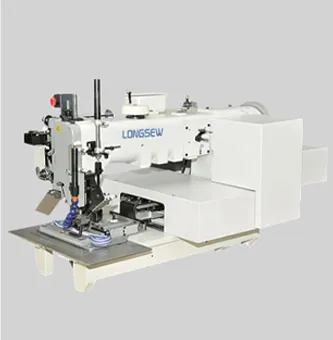Sewing with Precision Mastering the Art of Lockstitch Techniques for Seamless Projects
The Art and Functionality of Lockstitch A Seamstress's Essential Tool
Lockstitch, a fundamental technique in the world of sewing, combines simplicity with effectiveness, making it an essential skill for both amateur and professional seamstresses alike. This method of stitching is characterized by its unique mechanism, where two threads, one from the needle and the other from the bobbin, interlock to create a sturdy seam. While it may seem straightforward, the nuances of lockstitch are rich with history, technology, and artistry.
The origins of lockstitch can be traced back to the early 19th century, coinciding with the Industrial Revolution. As textile manufacturing grew, so did the demand for more efficient sewing methods. The invention of the sewing machine, most notably by Elias Howe and Isaac Singer, revolutionized the craft of sewing by introducing lockstitch as a primary technique. This innovation enabled seamstresses to produce garments at an unprecedented speed and consistency, transforming both the fashion industry and everyday garment production.
One of the most fascinating aspects of lockstitch is its mechanics. The technique requires two threads the top thread, managed by the sewing machine needle, and the bobbin thread, which sits beneath the fabric. As the needle pierces the fabric, it carries the top thread down, where it loops around the bobbin thread, forming a secure stitch that is both strong and neat. This interlocking system provides an excellent balance between flexibility and durability, making lockstitch the go-to choice for various fabrics, from lightweight silks to heavier denim.
In addition to its practicality, lockstitch allows for a range of creative expressions
. Seamstresses can adjust thread tension and stitch length, which impacts the final appearance of the seam. For instance, a tighter stitch can provide a more polished finish, while a looser stitch may be employed for basting or temporary holds. Furthermore, the use of colored threads adds a visual element to sewing projects, enabling artisans to blend or contrast stitches according to their design vision.lockstitch

Lockstitch is not without its challenges. While it is generally straightforward, achieving the perfect tension can require practice and patience. Incorrect tension can lead to puckering or loose stitches, which can compromise the integrity of the final product. Additionally, practitioners may face difficulties when working with specialty fabrics that require unique handling. Nonetheless, the challenges presented by lockstitch only serve to enhance a seamstress’s skill set, encouraging continuous learning and experimentation.
In the era of fast fashion and mass production, the appreciation for traditional sewing techniques, such as lockstitch, remains robust. Many contemporary designers and enthusiasts advocate for a return to handcrafted techniques, emphasizing sustainability and individuality. Lockstitch embodies this ethos, as it allows for the creation of custom pieces that can withstand the test of time, both in terms of durability and stylistic relevance.
Moreover, numerous educational resources, workshops, and online tutorials cater to those eager to learn this timeless technique. Communities of sewing enthusiasts continually share their projects and tips, fostering an environment of support and shared creativity. As the world shifts toward a greater appreciation for craftsmanship and DIY culture, lockstitch stands as a testament to the art of sewing, blending practicality with aesthetic appeal.
In conclusion, lockstitch is far more than a mere stitching technique; it is a cornerstone of sewing that embodies both functionality and artistry. From its historical roots to its modern-day applications, this technique continues to be a vital part of the seamstress’s toolkit. Whether you are mending a favorite garment or creating a bespoke piece, mastering the lockstitch opens up a world of possibilities in the realm of fabric and design.
-
Industrial Cylinder Arm Sewing Machine: Revolutionizing Heavy-Duty SewingNewsJul.28,2025
-
Cylinder Arm Sewing Machine: Perfect for Special Sewing ApplicationsNewsJul.28,2025
-
Cylinder Bed Sewing Machine: Essential for Sewing Complex MaterialsNewsJul.28,2025
-
Heavy Duty Sewing Machine: The Essential Tool for Industrial ApplicationsNewsJul.28,2025
-
Computerized Pattern Sewing Machine: Revolutionizing Precision StitchingNewsJul.28,2025
-
Heavy Duty Industrial Sewing Machine: Power Meets PrecisionNewsJul.28,2025
-
Leather Sewing Machine: The Industrial Standard for Tough MaterialsNewsJul.18,2025





























